HACKSAW RIDGE: A Film Of Contrasts That Seamlessly Works
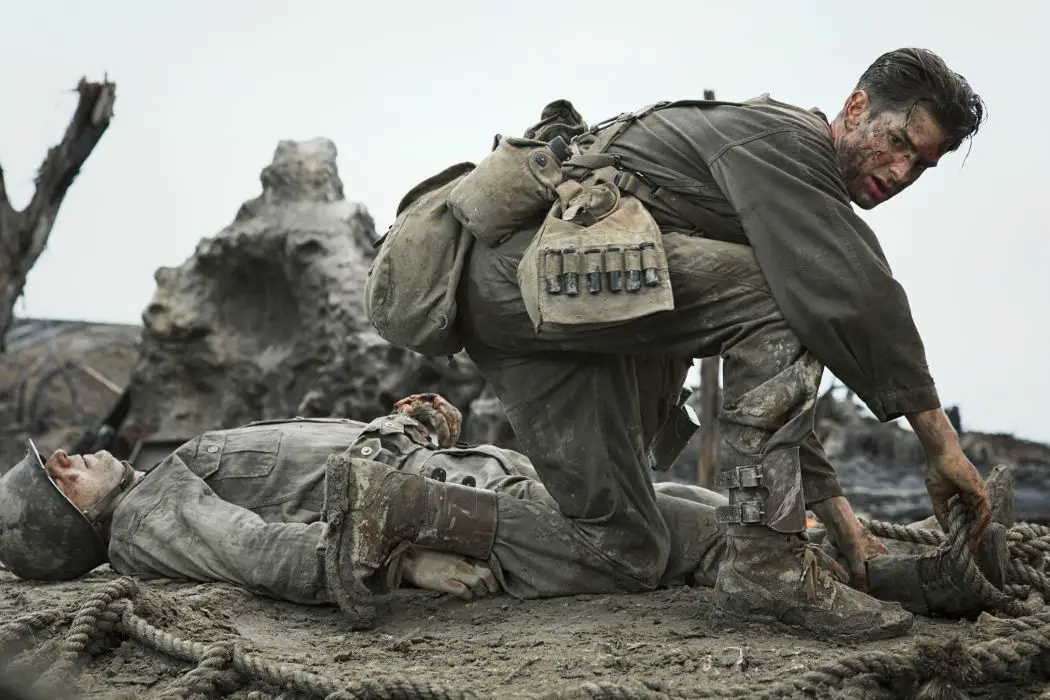
David is a film aficionado from Colchester, Connecticut. He enjoys…
Mel Gibson is not one to shy away from the sheer brutality of violence, especially when it comes to warfare. It’s one of the qualities that he is simultaneously lauded and reviled for, seen in his past films Braveheart, The Passion of the Christ, and Apocalypto.
What helps to distinguish Hacksaw Ridge is that, at its core, it is a film that attempts to combine the seemingly contradictory qualities of pacifism and the violence associated with patriotism. Is it possible to hold yourself to moral Christian standards while also fighting for one’s country during a time of war? There is no concise or definitive answer, yet Hacksaw Ridge is a compelling examination of how one man attempted to do just that.
Exposition and Motivations
Based on a true story, Hacksaw Ridge concerns a man named Desmond Doss (played by Andrew Garfield), who was a decorated hero during the Battle of Okinawa in World War II, despite the fact that he never shot a gun. Holding true to the Christian commandment “thou shalt not kill,” Doss was a conscientious objector, and despite some initial friction, is eventually allowed to step into battle without a weapon.
Before we get to Okinawa, though, Gibson drags us through a somewhat hurried exposition, in which Doss’s early childhood is shown, including his relationship with his parents (played by Rachel Griffiths and Hugo Weaving), an older brother (Nathaniel Buzolic), and a romantic interest in the form of Dorothy Schutte (Teresa Palmer). The scenes here, though not entirely wasteful, feel a bit too sugary-sweet, and seem especially out of place in a film that eventually turns into nearly an hour and a half of the D-Day battle from Saving Private Ryan.
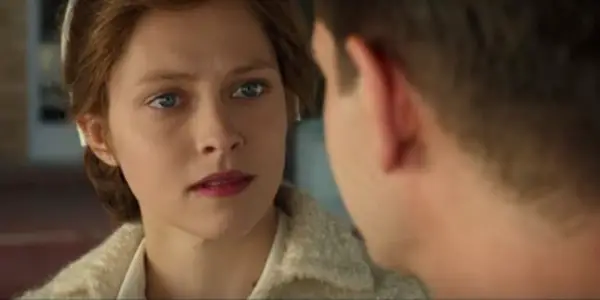
In addition, after some wishy-washy initial character interactions, what is noticeably missing (and seemingly essential) is that which eventually forms the backbone of the film: an in-depth exploration of the religious beliefs of Doss and of his true reasoning for choosing to go into battle without a weapon. Mere hints are touched upon, seen in some flashbacks later on, yet it is not entirely convincing. Thankfully, the remainder of the film, with its incredibly intense war scenes and a glimpse into Doss’s true heroism, more than makes up for this lack of character background.
To War
After some lighthearted yet mostly entertaining drill sergeant scenes, led by a trying-his-best yet still miscast Vince Vaughn (where is R. Lee Ermey when you need him?!), Hacksaw Ridge leaps into battle. Once the bullets start flying, hold on tight, because there is no turning back from here.
In anyone else’s hands, Hacksaw Ridge might have been a disaster. As it is, the film is sometimes too sentimental, choosing to imbue battle scenes with drawn-out slow motion along with a heightened, romanticized score. Doss himself is even framed all-too-obviously as a Christ-like figure (pay particular attention to one scene where he is laid out on a stretcher). Yet, though the film is sometimes a bit too heavy-handed when it comes to religious imagery, it also doesn’t shy away from the vicious realities of war.
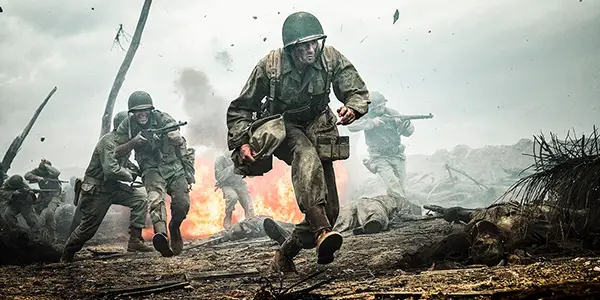
Mel Gibson‘s portrayal of the Battle of Okinawa is likely one of the most horrifically brutal war dramatizations that I have ever seen on film. There is no shortage of limbs getting shot off, men dying by the dozens through barrages of bullets, guts pouring out of bodies, bombs exploding with thunderous force, and seemingly no one immune to the onslaught of the massive Japanese army.
At times, the film even utilizes jump scares to catch you off guard during some of the quieter interlude moments between fighting, perhaps in order to show that, like the men in battle, there is never a moment when you can let your guard down. As mentioned earlier, it is likely that the graphicness of Gibson‘s film will be heavily compared to Spielberg‘s D-Day battle as portrayed in Saving Private Ryan. The only difference is that Gibson‘s violence is unrelenting, lasting for much of the film as opposed to just an opening sequence.
Performances
Much of the success of Hacksaw Ridge is due to Andrew Garfield‘s soulful performance. His boyish, charming demeanor is matched only by his character’s unwavering desire to hold tight to what he believes in. Garfield, who may be best known by his performances in The Amazing Spider-Man series, is a much more gifted actor than that series gives him credit for, and his performance here is much more akin to his character in Never Let Me Go than as the costumed superhero. His ability to show complex emotions through mostly solemn expressions is truly admirable. With Martin Scorsese‘s Silence right around the corner, this could very easily be a breakout year for the young actor.
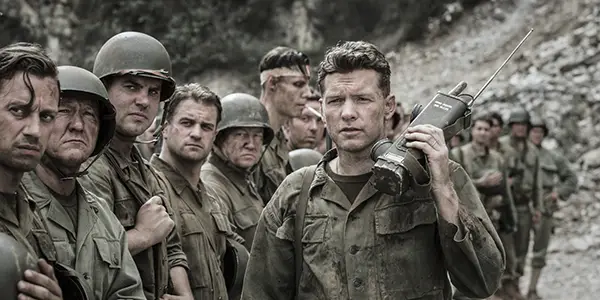
The remainder of Hacksaw Ridge, though, is strewn with mostly forgettable faces. Sam Worthington is bland as Captain Glover, while the film’s really only interesting character other than Garfield‘s, Smitty (Luke Bracey), receives little screen-time. It was perhaps an intentional decision by the filmmakers to make Garfield‘s character the only standout role, yet the familial bonding aspect that often feels essential in a war drama was therefore sorely lacking, especially when compared to the camaraderie scenes in many other slower-paced films.
Pacifism at a Time of War
Hacksaw Ridge is a film of contrasts. Though centrally focused on a man who is an objector to violence, the film itself is also hell-bent on portraying that violence in its rawest form. At times, it is even seen as a necessity, since both Doss’s life and the lives of those around him are often saved only through gunfire. Yet, rather than seeming contradictory, the film somehow successfully marries these opposing ideals.
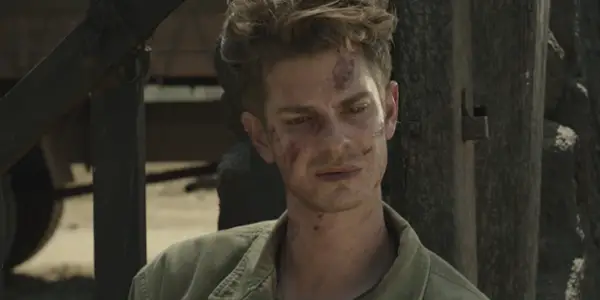
Gibson portrays a wartime battle as it must have actually happened, with no sugar-coating or turning the camera away when someone is killed. It is a bluntness that might turn people off to the film, instead expecting it to focus more exclusively on the non-violent aspects since that is the primary motive behind Garfield‘s character. Yet, to show the contrast, there are also a great number of scenes showing Doss running back and forth into the field of battle (in a scene reminiscent of Robert Zemeckis‘s Forrest Gump), carrying wounded soldiers to be nursed back to health by the army medics waiting below the ridge.
These moments, which Doss was eventually celebrated for, are the true highlights of the film. To know and understand that this really happened just seems to make its portrayal all the more stunning. Desmond Doss saved 75 people at the Battle of Okinawa, a commendable feat by any standard during a time of war, and even more impressive considering he never used a weapon.
Conclusion
To conclude, Hacksaw Ridge is an exceptional war film from director Mel Gibson. Though at times overly violent, even by Gibson‘s standards, and with a clunky exposition, it is also remarkably realistic, as visceral an experience in a movie theater that you are likely to see all year. Though with few standout performances, Garfield is exceptional enough to carry the film on his own.
It is my hope that, despite what people may think of Mel Gibson himself, they will come out to see what I believe to be one of the finest films of the year.
What do you think of Hacksaw Ridge? Is Mel Gibson’s use of violence effective, or does he go too far?
Hacksaw Ridge is out in U.S. cinemas and coming to U.K. cinemas on January 27th 2017. Find international release dates here.
Does content like this matter to you?
Become a Member and support film journalism. Unlock access to all of Film Inquiry`s great articles. Join a community of like-minded readers who are passionate about cinema - get access to our private members Network, give back to independent filmmakers, and more.
David is a film aficionado from Colchester, Connecticut. He enjoys writing, reading, analyzing, and of course, watching movies. His favorite genres are westerns, crime dramas, horror, and sci-fis. He also enjoys binge-watching TV shows on Netflix.













